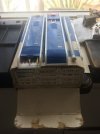cbrailways
Western Thunderer
Hi Col. I missed your post above questioning the SB position. Did you resolve that one?
Hi Chris,Hi Col. I missed your post above questioning the SB position. Did you resolve that one?
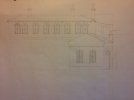
 . Although it is mainly a test piece to prove the basic construction method I would like to use for all the boards I have built it to the dimensions and shape to one of two non scenic boards.
. Although it is mainly a test piece to prove the basic construction method I would like to use for all the boards I have built it to the dimensions and shape to one of two non scenic boards.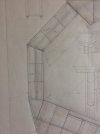
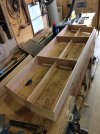
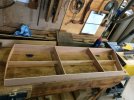
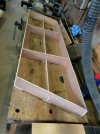
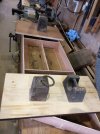
So do I Neil, although retired now I find like most before me seem to say "busier now than when in work"......Look forward to further progress…
Neil.
 , a have a lot going on apart from model railways, our house is another ongoing project, so instalments on progress will be intermittent
, a have a lot going on apart from model railways, our house is another ongoing project, so instalments on progress will be intermittent  .
.This board will support a double line of curved and elevated track on a slight gradient, ply supports for this can be easily fitted in between the frame work of this board where required. Once that is built I could skin the top of the board with 3mm ply, this will help to strengthen the frame of the baseboard.
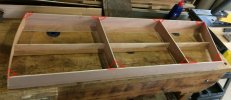
A good method Dave, certainly saves on material if you don't need a surface for any reason.Rather than skin the entire board (and boards) I'd just add 3mm ply triangular plates, whether cut in or on top, to add strength to the frame with minimum weight.
View attachment 184444

They’re brilliant for putting 10 or 12BA nuts onto screws. Might work for 14, don’t know, don't recall trying.Best you crack on then!
Very envious that you still have one of the Faber clutch pencils. I bought mine when I was 15 and it fell apart last year after fifty years use; I probably got my money out of that one. I am now searching to see if they are still available.
Mine is about 50 years old, never been with out it, picked up a load of leads including colours at a boot sale some years back for a nicker.Best you crack on then!
Very envious that you still have one of the Faber clutch pencils. I bought mine when I was 15 and it fell apart last year after fifty years use; I probably got my money out of that one. I am now searching to see if they are still available.
